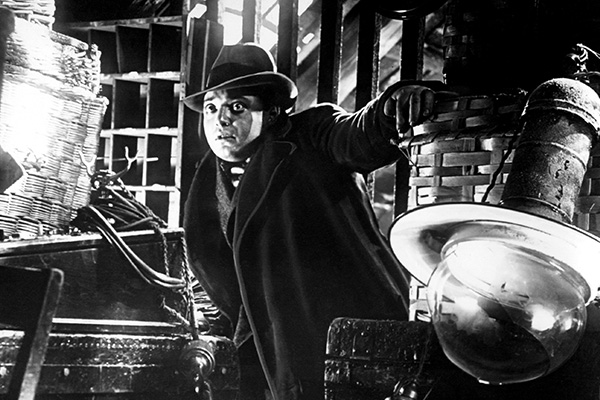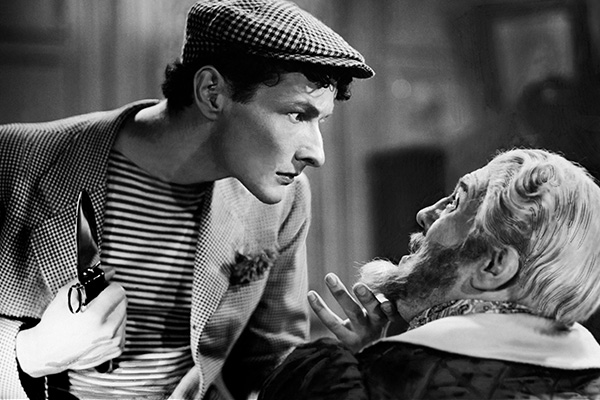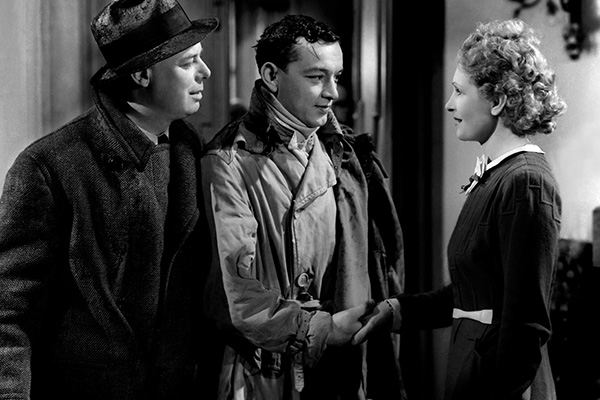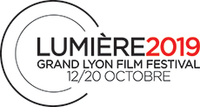The infinite nuances of the series Big classics
in black and white
PostED ON OCTOBER 14 at 12:45pm
In ten world heritage films, the use of black and white revitalizes radiant worlds of contrast.
Black
In black and white, the most spectacular is ink-black. Citizen Kane (Orson Welles, 1941), M (Fritz Lang, 1931), and The Night of the Hunter (Charles Laughton, 1955) form a trio of wicked films - like the night, when threatening and especially when secretive. It shines in Laughton’s work like an evil fairy tale. It gradually intensifies, like the merciless hunt for the serial killer in Lang's film. It radiates in the work by Welles, who films daytime scenes as if they were nocturnal. These three directors project black and... wave black as a banner. They plant the seed of a slowly developing menace, incarnated by ever more powerful characters, who loom large like huge shadows.

M by Fritz Lang
White
In broad daylight and diurnal lyricism, Le Plaisir (Max Ophuls, 1952), Stagecoach (John Ford, 1939), Bizarre, Bizarre (Marcel Carné, 1937) and The Cranes Are Flying (Mikhail Kalatozov, 1957) play with blinding whites to brandish their willingness not to hide anything. Indeed, they blow up the screen. We run relentlessly after the joyful merry-go-round, bursting with the dazzling lights of Ophuls. We cross dangerous territories, in full exposure, to prove our courage, positive demeanor and youth of the era of American pioneers in the work by Ford. We have real fun, face to face, without secrecy, in the absurd comedy by Carné. We politicize our overflowing love in the heart of the USSR, in an openly patriotic flame by Kalatozov.

Bizarre, Bizarre by Marcel Carné
Gray
Between black and white, there is obviously primordial gray. Gray signifies reality in the cinema, a representation of the world not seeking over-romanticizing or the stunning effect in an ostentatious sense. Gray, openly complex, gives life to La Règle du jeu (Jean Renoir, 1939), Tokyo Story (Yasujiro Ozu, 1953) and Miracle in Milan (Vittorio De Sica, 1951). Gray dominates, but with simplicity! Men each have their reasons for their manipulations and intrigues in the film by Renoir. Relaxed old age engages in gesture after gesture of destiny in the work by the pleasant and ever-elegant Ozu. A slum that could appear dull, vibrates with infinite grays, if you look at it long enough, as did De Sica. Without ever aiming to scream for attention, the gray universe delivers as much as the dialogues. The black, white and gray of the big classics in black and white invite the eye to cultivate its acuity. Imagination in the face of total blackness, or in rapture before a sudden splash of dazzling white, with the respite of gray, defines a variety of cinema which has not finished revealing its secrets.

La Règle du jeu by Jean Renoir
Virginie Apiou

